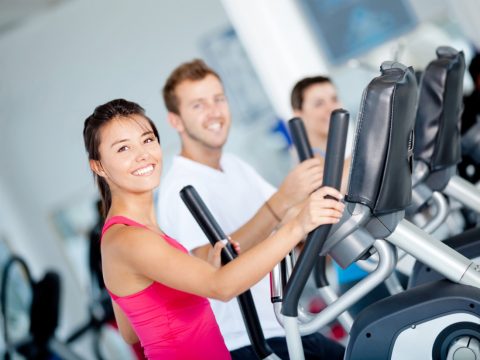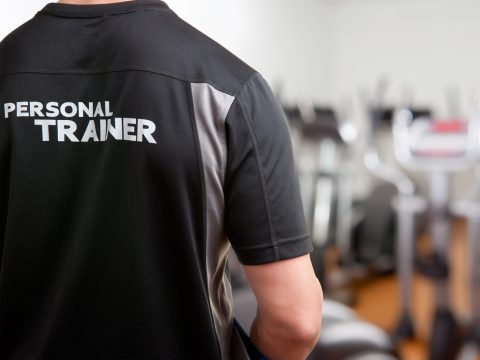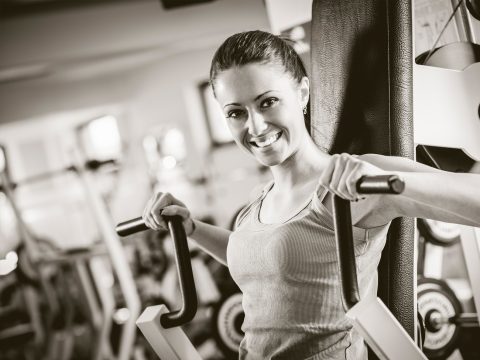In order to maximize fat loss, we need to maximize caloric expenditure so that calories into our bodies are less than calories out. In order to maximize caloric expenditure, we need to maximize the amount of oxygen we are consuming when we exercise. We utilize more oxygen when we involve more muscle mass. So any activity that involves more muscle mass will make fat loss easier. So consider these fine-tuning tips:
- At least one or two of your primary aerobic activities should involve activities during which you stand to perform them like running, power walking, cross-country skiing or stair-climbing. If your muscles have to support you in an upright position, they must expend more energy to do so in comparison to a seated, body-weight supported position. This will maximize caloric expenditure.
- At least one of your primary aerobic activities should involve both your arms and your legs. Activities like rowing or cross-country skiing, which involve vigorous activity from both your arms and your legs, will expend a lot of energy. Of course, cross country skiing which occurs in an upright position and involves both your arms and your legs will be a higher calorie burner than rowing.
- Consider the environment in which you exercise. Your heat regulator and your appetite are both controlled by your hypothalmus. So, if you are exercising in a colder environment, like a pool during a swim workout, your hypothalmus must act in order to maintain your core temperature. As it responds to the colder environment, it also acts to stimulate your appetite. This explains why many runners find they may start a run hungry but once they’re finished, it may take them an hour or more before they’re ready to eat. This effect is even greater if the run took place on a hot day. In contrast, many athletes have difficulty explaining why, after a swim workout or a long-easy hike, they are famished. This effect makes it more difficult to lose fat with swimming. This is why elite level swimmers (who are much better at burning fat while swimming than recreational swimmers) still carry on average 5% more body fat than elite level runners. I’m definitely not suggesting that you find the hottest environment to perform your workouts – which would pose it’s own health risks. I’m also not suggesting that swimming does not burn fat – it’s just not as efficient as, say, running. Swimming has many advantages for an overweight individual; their body doesn’t overheat so the workout feels more comfortable, the buoyancy factor makes it a lot easier on their joints, and they can definitely improve their cardiovascular and musculo-skeletal systems. Just be sure that not all your primary workouts take place in a colder environment (swimming, outdoor cycling, easy hiking) and that at least one, involves an activity during which you will sweat and raise your body core temperature.
When designing your cardiovascular fat loss program, consider these tips and don’t forget to include muscle-conditioning exercise and a healthy diet.




